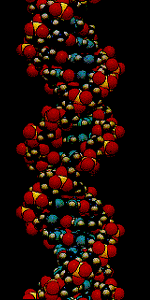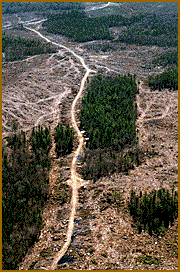
.gif)
 While some species manage to survive long enough to adapt fragmentation of their habitats, others become extinct when isolated. This is due to loss in genetic variability and what are called edge effects.
While some species manage to survive long enough to adapt fragmentation of their habitats, others become extinct when isolated. This is due to loss in genetic variability and what are called edge effects.

Loss of genetic variability
Isolation of a group results in a loss of genetic variability. This leads eventually to homozygosity (having two identical alleles for a given trait, so that crossover no longer results in new characteristics). This means the loss of the ability to adapt to environmental changes. (Jablonski, 1993)
Edge Effects
Two types of edge effects can be distinguished.
1. Deterioration of quality of habitat near the boundary of an ecological system.
2. The dispersal of individuals across an ecological boundary into regions unsuitable to their life habits, where they may be unable to survive or reproduce.
(Jablonski, 1993)
The rate of dispersal of individuals into unsuitable areas determines the minimum size of a patch of suitable habitat on which a population can persist, known as the critical patch size. (May, 1988)

.gif)